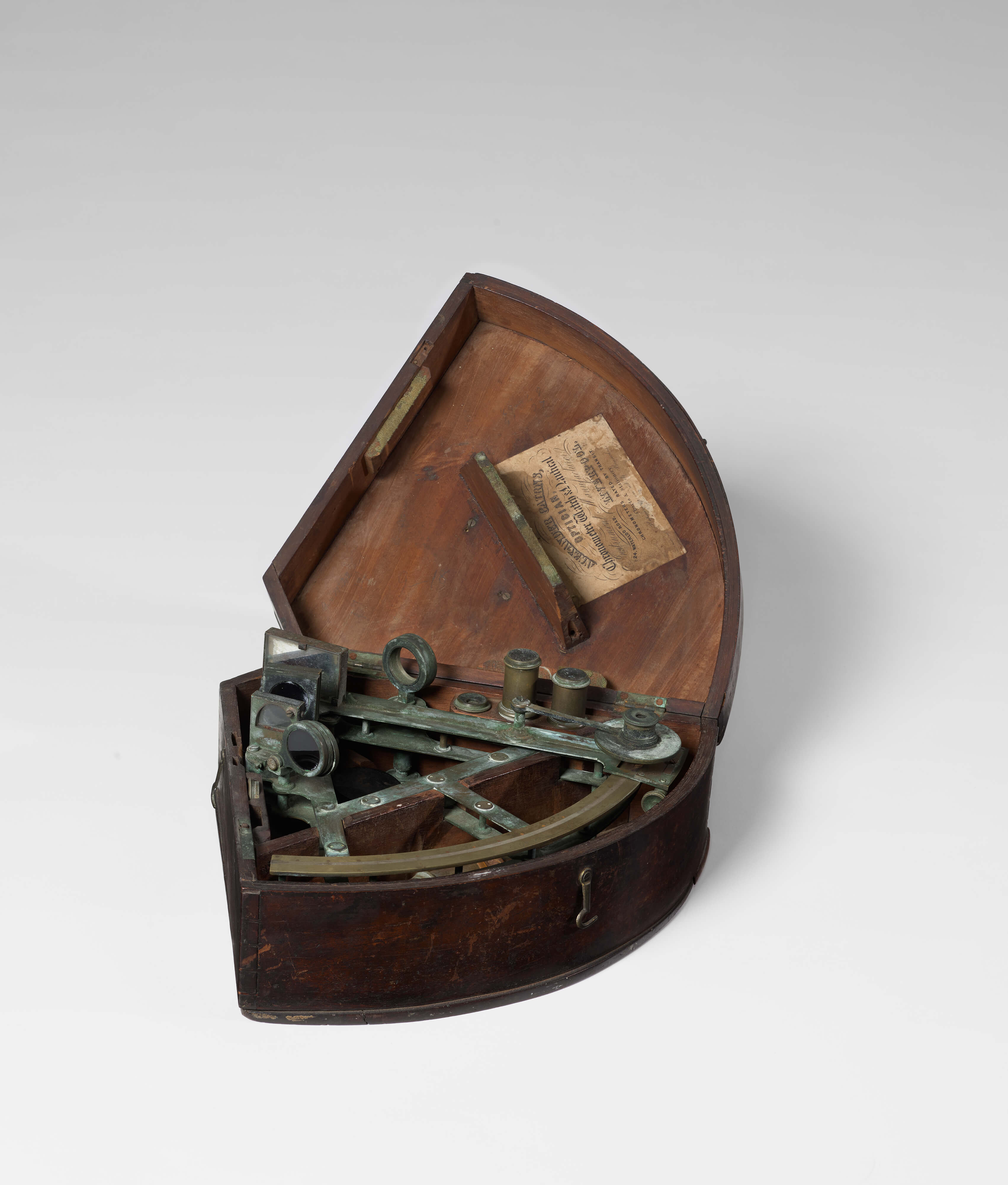
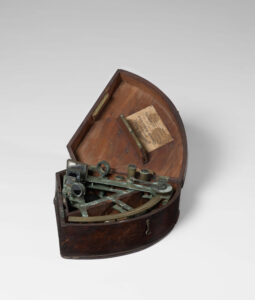
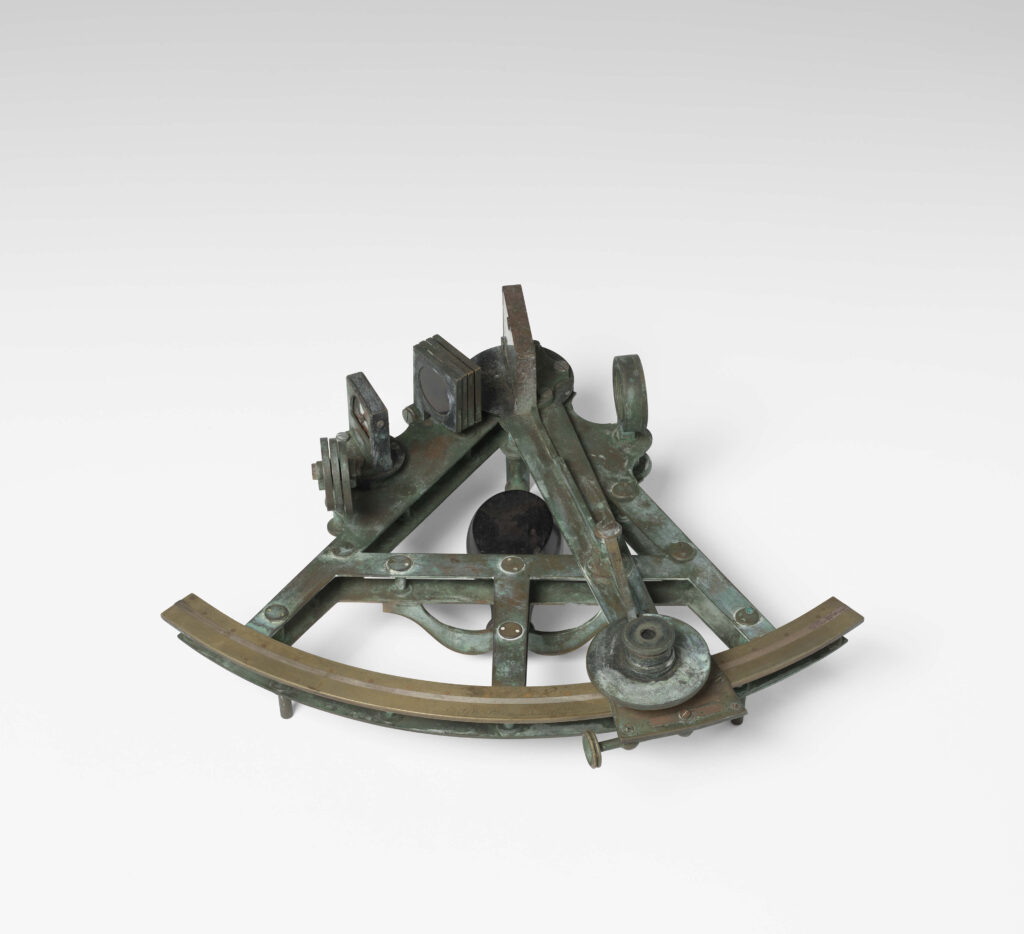
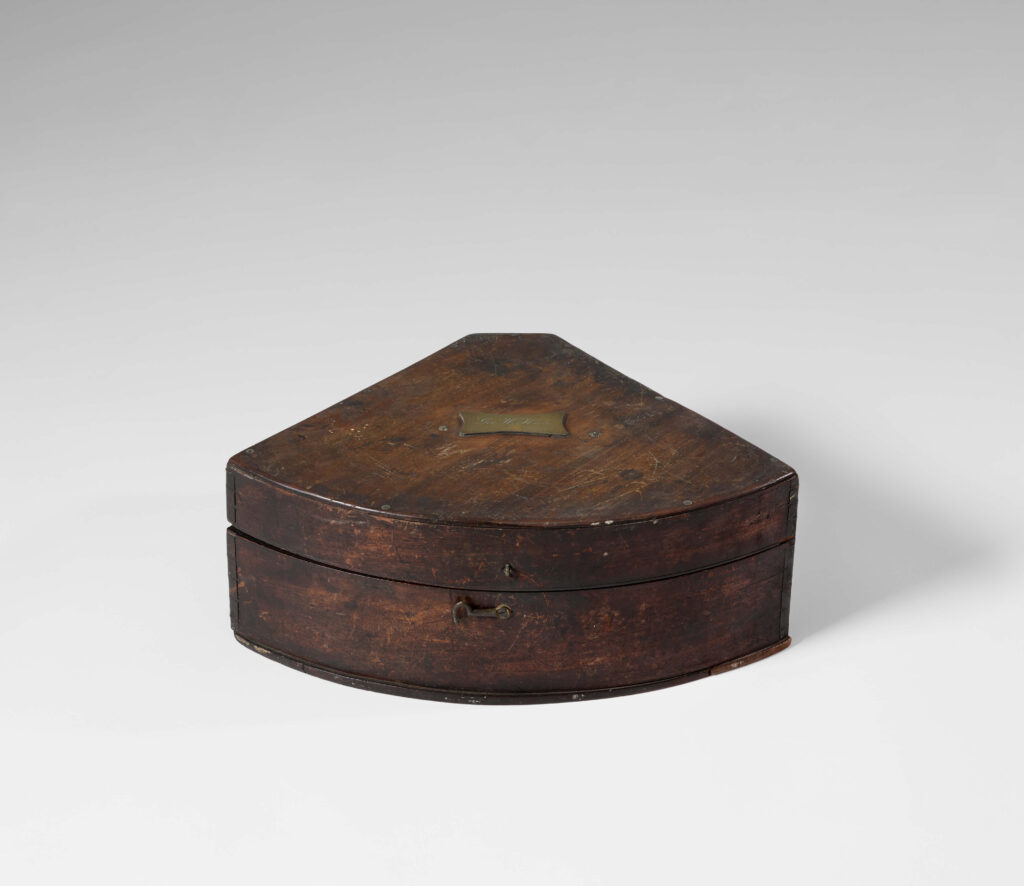
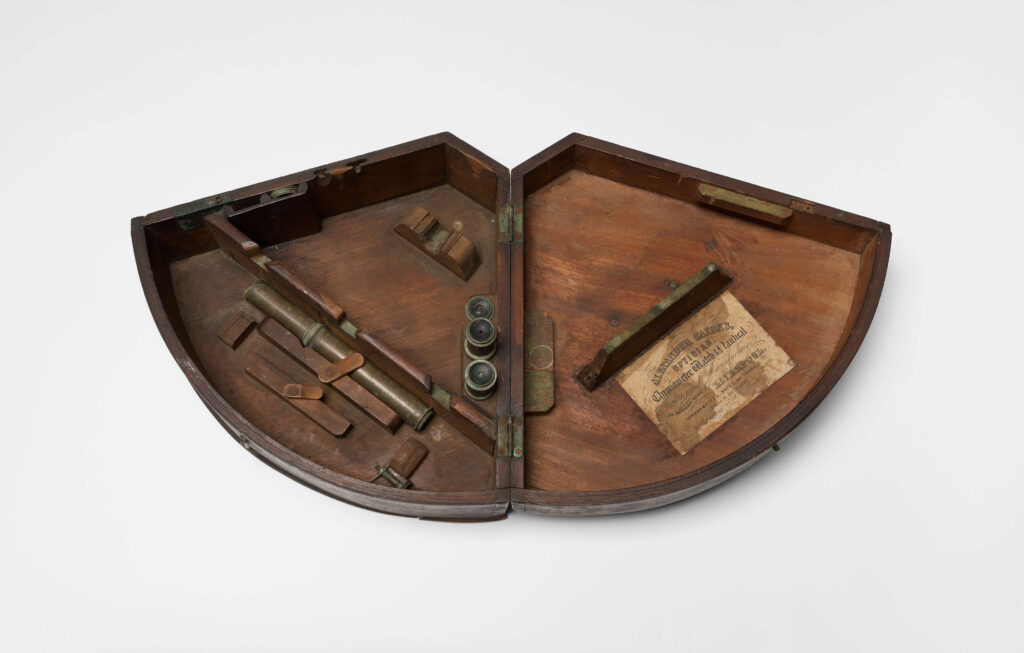
Sextant
A sextant is a tool that measures angles. Navigators used sextants to measure the angle between a visible object, like the sun or a star, and the horizon. Using mirrors and a scale, the sextant provided navigators with precise measurements that allowed them to determine the distance between objects and calculate their latitude while at sea.
This sextant was made in the mid-19th century. An engraving on it reads “E & G. W. Blunt New York”, identifying the instrument’s manufacturer. Edmund and George Blunt were brothers who opened a nautical shop in New York in 1824 and began selling navigational instruments in the mid-1850s. They were among the first Americans to make such objects.
The sextant is stored in a mahogany box that protects the instrument from harm. The box contains telescopes and lenses that would be used with the sextant. It has a paper label that reads “Alexander Cairns Optician, Chronometer, Watch, and Nautical Instrument Manufacturer / 24, Waterloo Road, Liverpool. Chronometers rated by transit. Charts & Stationary, Repairing in all its Branches”. Like Edmund and George Blunt, Alexander Cairns made nautical instruments in the mid-19th century, but he was working in London.
Creator
E & G. W. Blunt and Alexander Cairns
Date Created
mid-19th century
Medium
Wood, Brass, Paper, Ink, Glass
Dimensions
Sextant: [H] 9.25 in. [W] 11.5 in. [D] 4 in. Box: [H] 5 in. [W] 13.75 in. [D] 4 in.
Catalog Number
2525.4a,b
Credit Line
USS Constitution Museum Collection. Gift of Roberta Lang on behalf of her brother, Edward Louis Bonacci.
Terms of Use

This work is licensed under a Creative Commons Attribution-NonCommercial-NoDerivs 3.0 Unported License